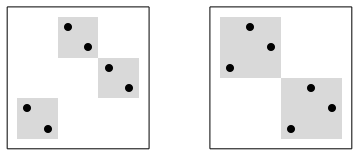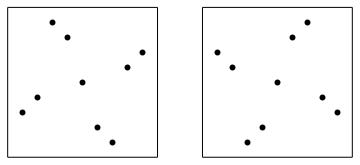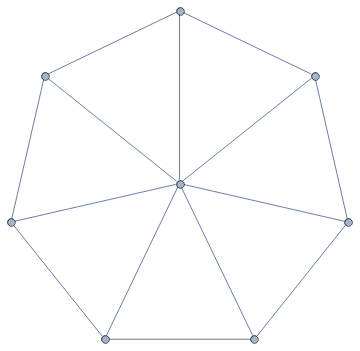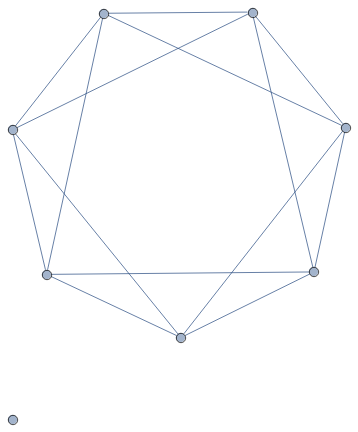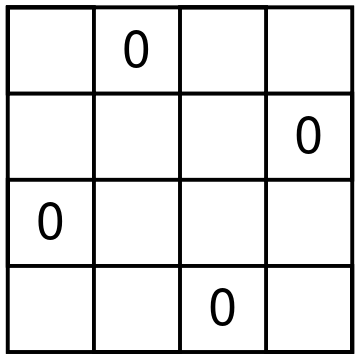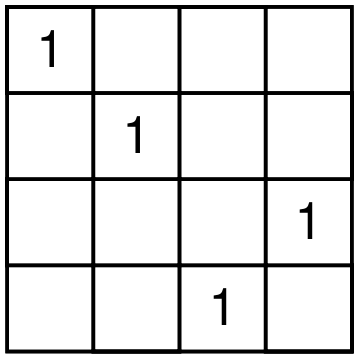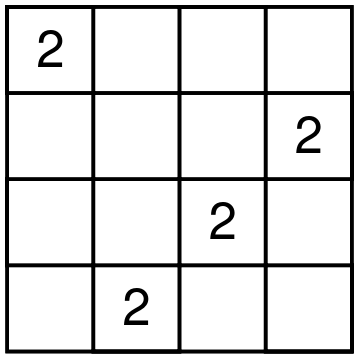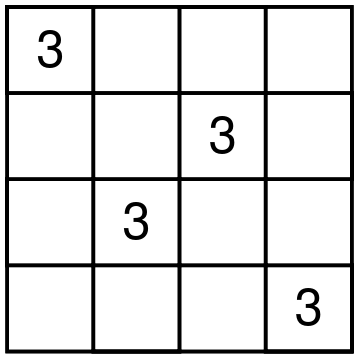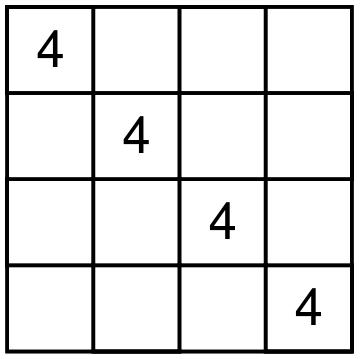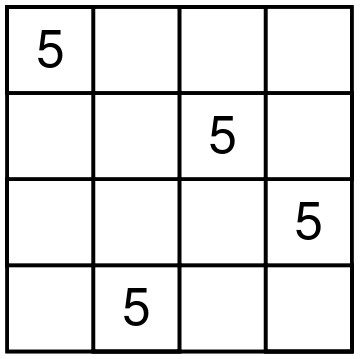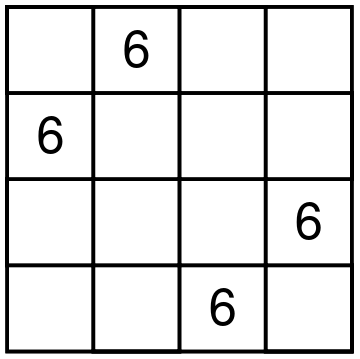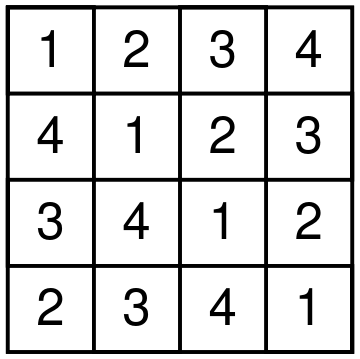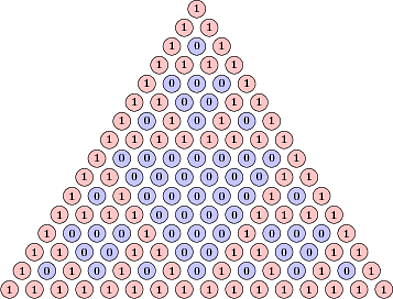I want to study patterns inside permutations. Consider a permutation of size 4: 1432. Today I am excited by ordered subset of size 3 inside this permutation. For example, I can drop the last number and look at 143. The ordering in 143 is the same as in 132, or, as a mathematician would say, 143 is order-isomorphic to 132. In my example of 1432, I have four subsets depending on which number I remove: 432 is order-isomorphic to 321, while 132, 142 and 143 are all order-isomorphic to 132.
The density of a pattern 123 in the permutation 1432 is the ratio of subsets of size 3 that are order-isomorphic to 123 to all subsets of size 3. As I already calculated, the density of 123 in 1432 is zero, while the density of 321 is 1/4, and the density of 132 is 3/4.
A permutation is called 3-symmetric if the densities of all patterns of size 3 (123, 132, 213, 231, 312, 321) are the same. The reason I love this notion, is that 3-symmetric permutations are similar to random permutations with respect to patterns of size 3.
My example permutation, 1432, is not 3-symmetric. Thinking about it, no permutation of size 4 can be 3-symmetric. The number of subsets of size 3 is four, which is not divisible by 6.
I wanted to find 3-symmetric permutations. So the size n of the permutation needs to be such that n choose 3 is divisible by 6. The numbers with this property are easy to find. The sequence starts as 1, 2, 9, 10, 18, 20, 28, 29, 36, 37, 38, 45, 46. The sequence is periodic with period 36.
Any permutation of sizes 1 or 2 is 3-symmetric as all densities are zero. Duh!
The next interesting size is 9. My student, Eric Zhang, wrote a program and found that there are two 3-symmetric permutations of size 9: 349852167 and 761258943. These numbers are so cool!. First, they are reverses of each other. This is not very surprising: if a permutations is 3-symmetric, then its reverse must also be 3-symmetric. There is another property: the permutations are rotational symmetries of each other. That is, the sum of two digits in the same place is 10. You can see that rotating a 3-symmetric permutation produces a 3-symmetric permutation.
I decided to write a program to find 3-symmetric permutations of the next size: 10. There is none. I do not trust my programming skills completely, so adjusted my program to size 9 and got the same result as Eric. I trust Eric’s programming skills, so I am pretty sure that there are no 3-symmetric permutations of size 10. Maybe there are some 3-symmetric permutations in size 18.
Let’s find 2-symmetric permutations. These are permutations with the same number of ascends and descends inversions and non-inversions. For n to be the size of such permutation n choose 2 needs to be divisible by 2. That means n has to have remainder 0 or 1 modulo 4. The first nontrivial case is n = 4. There are six 2-symmetric permutations: 1432, 2341, 2413, 3142, 3214, 4123. We can also group them into reversible pairs: 1432 and 2341, 2413 and 3142, 3214 and 4123. If we look at rotational symmetry we get different pairs: 1432 and 4123, 2341 and 3214, 2413 and 3142.
You can try to find non-trivial 4-symmetric permutations. Good luck! The smallest nontrivial size is 33. Finding 5-symmetric permutations is way easier: the smallest nontrivial size is 28. The sequence of nontrivial sizes as a function of n is: 1, 4, 9, 33, 28, 165, 54, 1029, 40832, 31752, 28680, 2588680, 2162700, and so on. My computer crashed while calculating it.
Share:





